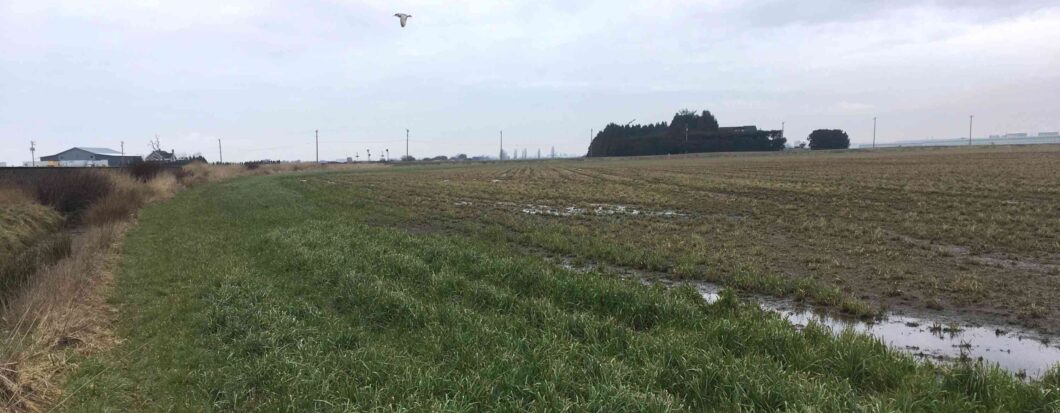Forage Enhancement Stewardship Program
What is it?
Every winter, migratory waterfowl descend in the hundreds of thousands on the Fraser River Estuary. Many species have become dependent on farmland and pastures for forage, often grazing them to the ground in their search for food. For farmers who grow perennial forage crops, such as hay and grasses, crop losses and damage to fields caused by grazing waterfowl have become costly.
To help grass forage producers affected by waterfowl grazing, DFWT initiated the Forage Enhancement Program. Under the program, DFWT shares in the costs associated with overseeding and reseeding damaged forage fields in the spring.
We all benefit from the ecosystem services perennial grass fields provide. In addition to providing important wildlife habitat, the large root systems of perennial forages can store up to 2.7 times more carbon than annual crops, and sequester it deeper into the ground for better, longer-term storage. Since perennial fields are not tilled annually, the breakdown and release of carbon from the plants' roots is slowed.

How does it benefit wildlife?
In response to the increasing cost of lost crops and reduced yields, some forage and dairy farmers in Delta and across the Fraser Valley have begun to convert their fields from perennial to annual forage fields, growing crops such as corn and leaving their fields bare in winter. If this trend continues, wildlife will lose significant habitat.
By helping to preserve perennial grass fields, DFWT is helping to preserve valuable habitat along the Pacific Flyway, a major north-south route for migratory birds that extends from Alaska to Patagonia, in one of Canada’s top Important Bird Areas (IBA). These fields also provide important habitat for grassland birds.

How does it benefit wildlife?
Crop losses due to grazing waterfowl range from lower yields, reduced harvest quality, or a reduction in the number of cuts per year, to plantings that are entirely destroyed. Foraging waterfowl can also compact fields and cause ponding, making it more difficult to work the soil, and for plant roots to penetrate the soil or access oxygen.
The cost to farmers is significant. If a producer needs to reseed 100 acres due to waterfowl damage, it can add $35,000-$50,000 in costs to their operation. In cases where grass forage fields must now be reseeded annually – instead of every 5+ years – perennial fields are becoming economically unviable. Many producers are reconsidering their current management practices; some are converting from perennial to annual grass forage fields, or growing other forage crops such as corn.
By sharing the cost of overseeding or reseeding perennial grass forage fields damaged by waterfowl, DFWT is sharing the cost of providing critical wildlife habitat with farmers, and also helping them to maintain sustainable farming practices. Perennial grass forage fields offer benefits such as:
• Improved water infiltration
• Increased soil quality
• Reduced soil erosion
How do DFWT and farmers work together to deliver the program?
DFWT shares in the costs associated with overseeding or reseeding forage fields in the spring due to waterfowl grazing. Cost-sharing supports the enhancement and continued provision of these high-value fields, both for dairy cattle feed and critical waterfowl foraging habitat.
What the research shows:
A 3-year perennial forage crop returns more than twice the soil organic matter as annual crops such as cereals or pulse crops. Soil organic matter fuels decomposer organisms, which in turn affect soil structure, water-holding capacity, and resistance to both compaction and erosion.

How Can You Help?
Your donation will work towards conserving important farmland and wildlife resources contained in the Fraser River delta.
